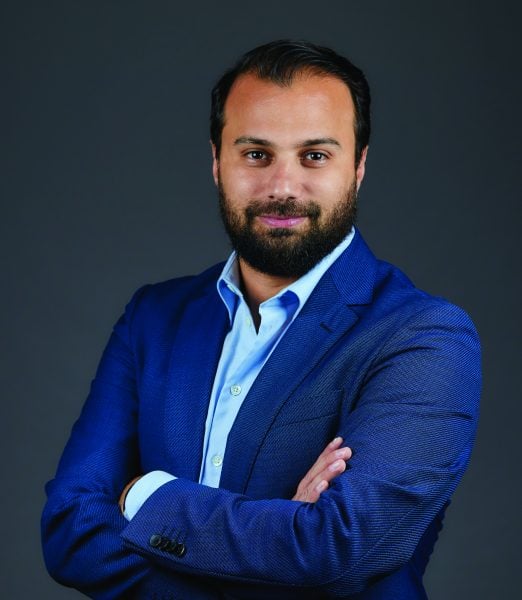 Let’s talk about acronyms, the never-ending list of acronyms our industry has become so obsessed with over the past few years. ATT, FLoC, FLEDGE, CCPA, GDPR… I could go on but I have a word count to observe, so consider these ‘the headliners’, the ones that are causing the industry such a headache right now.
Let’s talk about acronyms, the never-ending list of acronyms our industry has become so obsessed with over the past few years. ATT, FLoC, FLEDGE, CCPA, GDPR… I could go on but I have a word count to observe, so consider these ‘the headliners’, the ones that are causing the industry such a headache right now.
The rapid pace of change, accelerated further due to Covid-19, has triggered both panic and confusion in the market. Everyone is wondering the same thing: how will this new privacy-focused landscape play out in practical terms? It’s all very well theorising, but as more roadblocks force us to change direction, we need to be bold and fearless in carving out a new path.
Back in January 2020, it was Google that fired the first warning shots that the landscape was about to shift again with its decision to end support for third-party cookies by 2022. We’re now six months away from that deadline and have a privacy sandbox full of bird-themed solutions to show for it. Marketers have so far been wary of FloC (Federated Learning of Cohorts) despite Google insisting its cohort-based replacement was 95 per cent as effective as cookie-based advertising.
Campaign is throwing an engagement party. Brand engagement, that is. Join us to find how to keep customers invested in your brand while scaling from bricks and mortar to digital and mobile channels at our free-to-attend webinar.
Elsewhere, Apple’s delayed IDFA (Identifier for Advertisers) changes have also come into effect, with ATT (App-Tracking Transparency) recently activated alongside the iOS 14.5 rollout. User opt-in figures vary hugely for this, but according to data from AppsFlyer, adoption is on the rise (currently at 27 per cent), set to increase to 50 per cent by the end of June. It’s these kinds of figures, taken without much context or consideration, that tend to conjure up the most apocalyptic scenarios. Seriously, some of the conversations I’ve endured are worthy of cinematic production.
That, combined with the media’s tendency to run hyperbolic headlines about ‘the end of targeting and measurement’, make it that much harder to separate fact from fiction. In reality, it will still be possible to serve relevant and personalised content, but only if marketers take steps now to prepare for a more anonymised future and don’t just sit on the sidelines, waiting.
As we head towards the end of H1, it’s Apple who is very much in the driving seat, much to Facebook’s frustration. Google, on the other hand, has taken a much more practical approach, being cautious rather than outright rebellious, even following Apple’s lead by allowing its users to opt out of ad tracking across its Android devices in recent weeks.
Although there are obvious challenges ahead to navigate, we need to consider the emerging opportunities as well, particularly when it comes to programmatic. Statista predicts that programmatic buying will increase to $127bn by the end of 2021, while in the US, eMarketer projects a $3.93bn increase in mobile spending and a $2.83bn increase in video spending is on the cards. The untapped potential across digital video and audio here is huge; each growing their revenues – by 20.6 per cent year-on-year and 13 per cent year-on-year respectively – according to the 2020 IAB Internet Advertising Revenue Report.
It’s not hard to see why marketer focus is moving to these areas. Over-the-top (OTT) streaming services, such as Netflix and Hulu have added 20 million households in the past four years, with growth in the reach of ad-supported OTT services up 7 per cent year-on-year. As 5G rolls out and there’s wider availability of internet-enabled devices, brands will have more opportunities to connect on smart TVs and gaming consoles in real-time.
Connected TV is also primed for further investment, on course to reach $11.31bn this year and $18.29bn by 2024. It’s a powerful channel to tap into for a few reasons: hyper-level targeting, high completion rates and engaging content. That being said, there needs to be a strategic approach to planning, given the scale and rise of more OTT services and devices. Brands will need to optimise for specific audiences, locations, media and devices to see results.
Podcasts are also an increasingly important part of the marketing mix, as long-form audio continues to buck the trend for shorter, snappier content seen across social media and video. In fact, research from Edison shows that 70 per cent of monthly listeners don’t do anything else while listening to a podcast; that’s almost unheard of in today’s multitasking society.
But all of the above is futile unless we can move past the disruption, continue to double down on digital investments and recruit talent that can work across different platforms and streams seamlessly. To that end, it’s going to be less about recruiting for specific skills and more about prioritising competencies, such as being adaptable, data-fluent and creative.
It’s true that the gulf between 2019 and 2021 couldn’t be wider, but I’ll level with you: No one has all the answers just yet. Our job is to manage the chaos, embrace change and set an example for others to follow. Disruption. Evolution. Progress. It all amounts to the same thing in ad tech, and I wouldn’t have it any other way.









